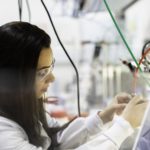 Countries around the world are striving to encourage young people to pursue an education in STEM topics. Unfortunately, new research from RMIT highlights how those from lower socio-economic backgrounds still tend to be frozen out.
Countries around the world are striving to encourage young people to pursue an education in STEM topics. Unfortunately, new research from RMIT highlights how those from lower socio-economic backgrounds still tend to be frozen out.
The researchers examined data from over 4,300 pupils from across Australia to try and understand the demographic predictors of science enrollment at school. A number of interesting trends emerged.
For instance, female students were more likely to study biology than physics, but it can often be difficult to create a syllabus that meets the diverse needs of students, especially those from underrepresented minorities.
Lack of resources
The paper also highlights the lack of resources in many schools to adequately teach science, whether that’s a shortage of books, lab equipment or materials. They cite the Finnish system as an exemplar, as students from different socioeconomic backgrounds study together.
“A students’ ease of access to, and a sustained immersion in cultural, social and science capitals facilitates a habitus and identity that embodies a sense that ‘science is for me’,” the authors say.
Being an Australian study, there was also considerable attention given to STEM participation among indigenous students, who the data suggests struggle to engage with all forms of science, with the notable exception of earth/space science. The researchers hypothesize that this may be due to the cultural connections they have with the land that may encourage study in these areas.
“This result may be explained by Aboriginal Peoples’ spiritual connectedness with Country, with land forming the basis of Aboriginal relationships, identities and cultural practices. Earth/space science syllabi commonly explore the interconnections between land, ocean and atmosphere,” the researchers explain.
Perhaps the biggest take away from the study is that participation in STEM topics is far from equal, and as such, a one-size-fits-all approach to teaching the subjects is unlikely to yield consistent results across society. By adopting a more tailored approach, the researchers are confident that the socio-economic differences in STEM adoption can be addressed.